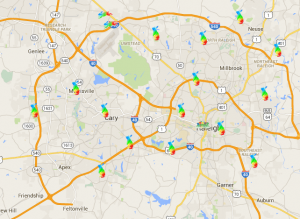N&O contributor J. Peder Zane sometimes gets it right (see Confederate monument) but the rest of the time he lives in a libertarian paradise that, frankly, doesn’t exist.
Read how he pooh poohs the Renewable Energy Investment Tax Credit, calling its repeal a “free market prod.” Well, it’s news to me that Duke Energy’s state-chartered monopoly on electricity is a “free market.” I was never the best student but I do seem to recall learning in school how a monopoly is pretty much the opposite of a free market.
I can’t wait to get this electricity free market that Zane promises. I’m sure that killing off competition is the best way to get it, right J. Peder?
Allowing the renewable energy investment tax credit to expire may be the best thing to happen to the green sector. Replacing the crutch of state support with the free market’s prod is our best hope of developing cheap, efficient renewables. It also addresses the fact that these well-intentioned subsidies have become a form of crony capitalism, sopped up by big corporations.
Source: NC budget is a fiscally responsible Goldilocks document | News & Observer
